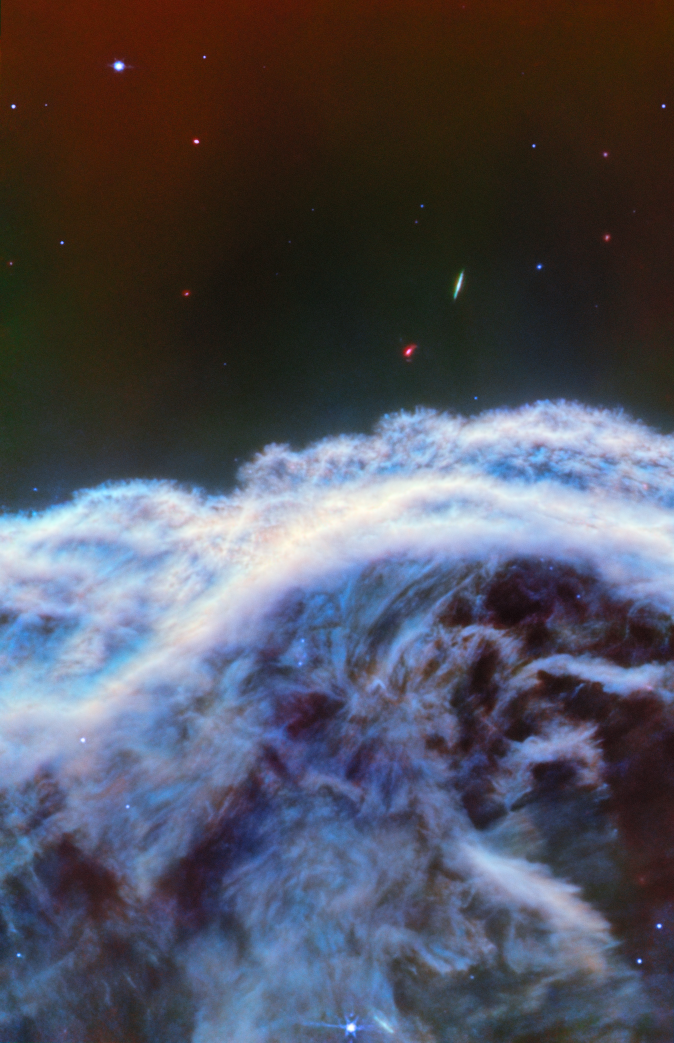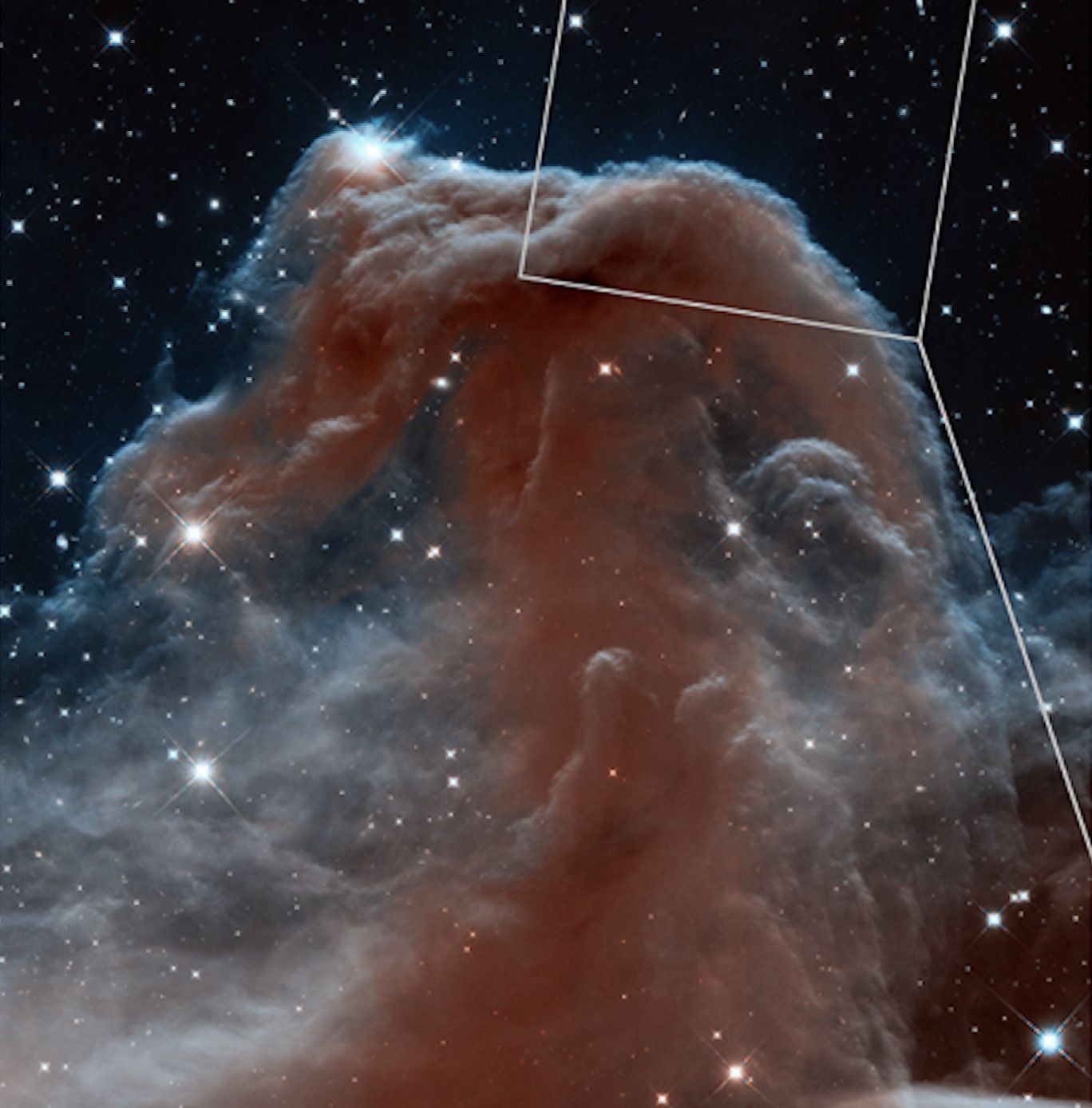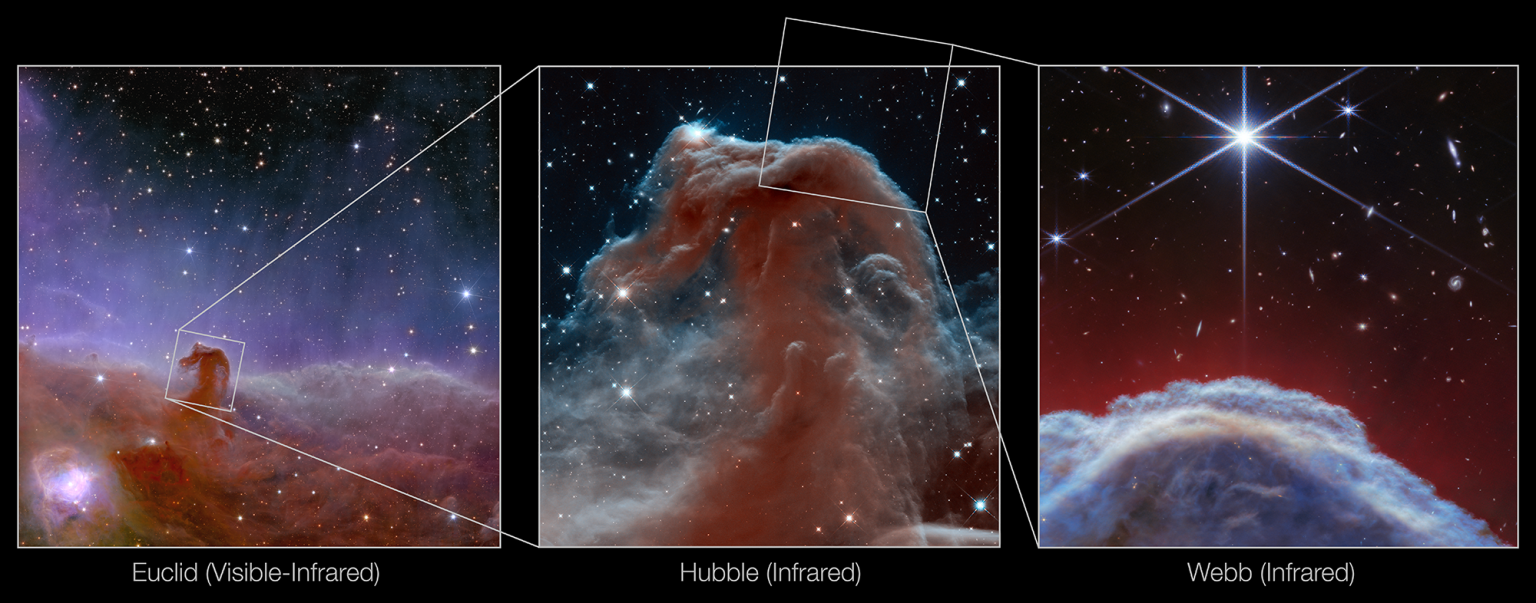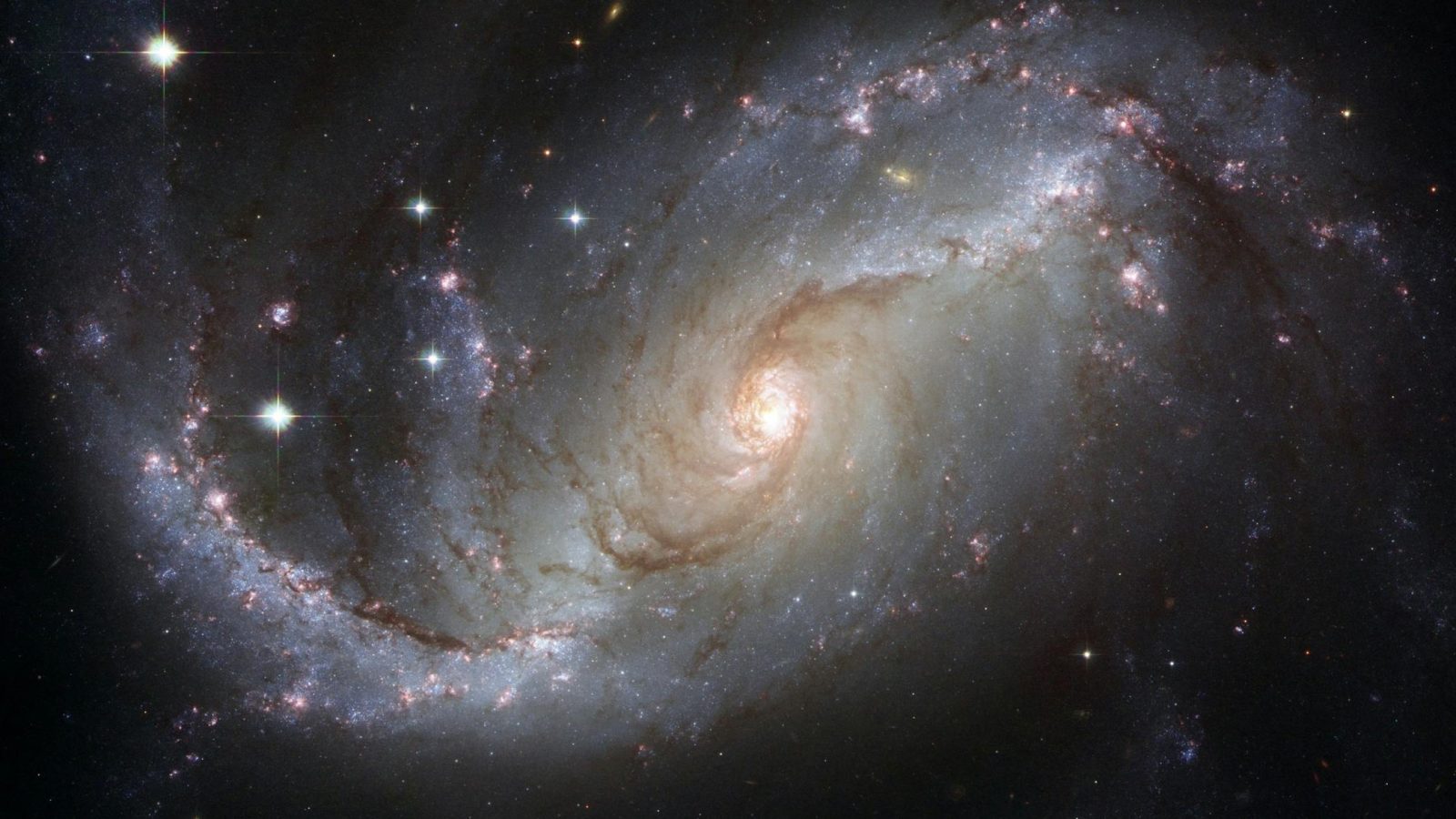NASA’s James Webb space telescope has captured the most high-resolution images of the Horsehead Nebula ever taken.
The Horsehead Nebula is named for its shape, which appears to be a horse rearing its head.
A nebula is mostly made up of gasses and contains small particulates. These cloud-like space structures dissipate completely or eventually form planets if there is strong gravity to pull the nebulous cloud together.
NASA explained the technology behind the James Webb telescope and the science of Nebulas:
Thanks to Webb’s MIRI and NIRCam instruments, an international team of astronomers has revealed for the first time the small-scale structures of the illuminated edge of the Horsehead.
As UV light evaporates the dust cloud, dust particles are swept out away from the cloud, carried with the heated gas.
Webb has detected a network of thin features tracing this movement.
The observations have also allowed astronomers to investigate how the dust blocks and emits light, and to better understand the multidimensional shape of the nebula.
ADVERTISEMENT
Below are the striking photos taken by the James Webb telescope and provided by NASA:




Washington Examiner explained:
The images show a portion of the Horsehead Nebula that is about 0.8 lightyears in width and 1,300 lightyears away.
NASA estimated the nebula has about 5 million years before it completely disperses.



Join the conversation!
Please share your thoughts about this article below. We value your opinions, and would love to see you add to the discussion!